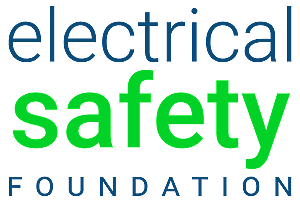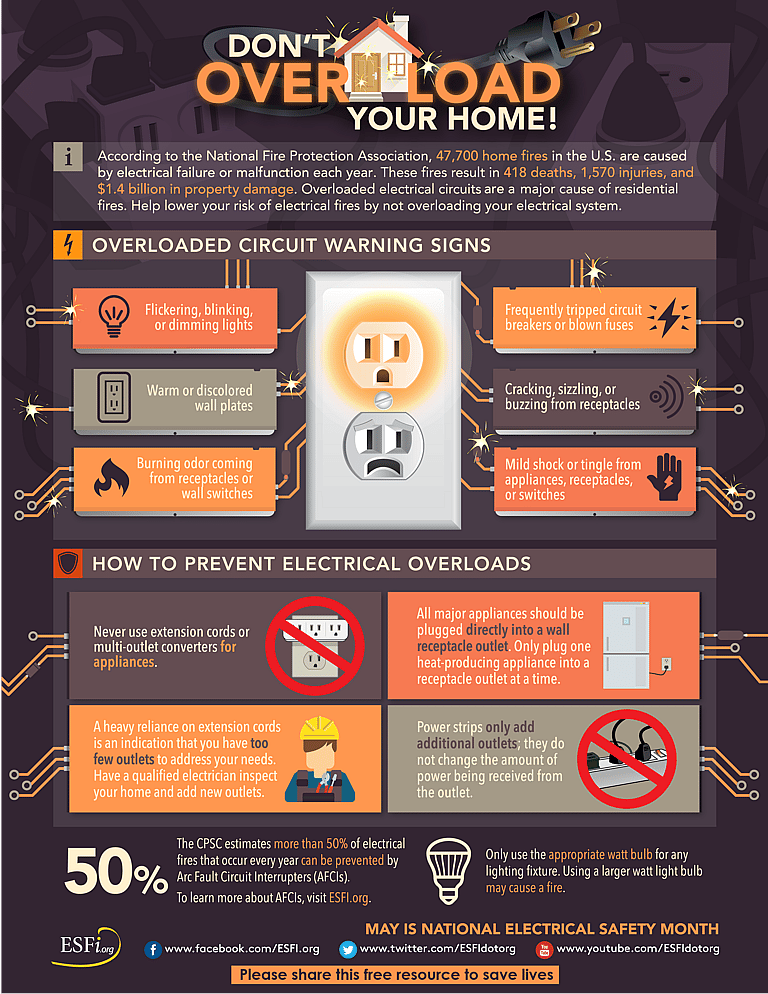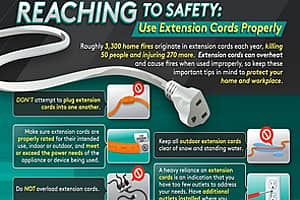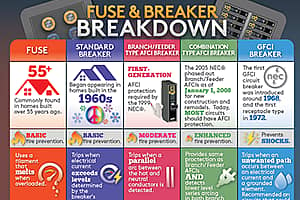According to the National Fire Protection Association, 47,700 home fires in the U.S. are caused by electrical failures or malfunctions each year. These fires result in 418 deaths, 1,570 injuries, and $1.4 billion in property damage. Overloaded electrical circuits are a major cause of residential fires. Help lower your risk of electrical fires by not overloading your electrical system.
Overloaded circuit warning signs
- Flickering, blinking, or dimming lights
- Frequently tripped circuit breakers or blown fuses
- Warm or discolored wall plates
- Cracking, sizzling, or buzzing from receptacles
- Burning odor coming from receptacles or wall switches
- Mild shock or tingle from appliances, receptacles, or switches
How to prevent electrical overloads
- Never use extension cords or multi-outlet converters for appliances
- All major appliances should be plugged directly into a wall receptacle outlet. Only plug one heat producing appliance into a receptacle outlet at a time
- A heavy reliance on extension cords is an indication that you have too few outlets to address your needs. Have a qualified electrician inspect your home and add new outlets
- Power strips only add additional outlets; they do not change the amount of power being received from the outlet







